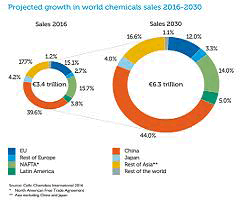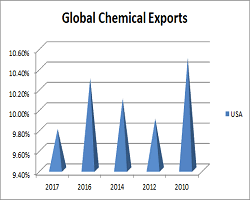Market Analysis, J Chem Appl Chem Eng Vol: 3 Issue: 2
Market Analysis Report on Green & Sustainable Chemistry
Henadzi Filipenka
Professor, Chemist, Leningrad Electrotechnical Institute (LETI), Grodno, Belarus. E-mail: hfilipenk@gmail.com
Keywords: Sustainable Chemistry
Introduction
Green and Sustainable Chemistry (GSC) covers subjects relating to reducing the environmental impact of chemicals and fuels by developing alternative and sustainable technologies that are non-toxic to living things and the environment. Green and Sustainable Chemistry includes all chemical aspects along the life cycle of chemicals as well chemical products and materials e.g. resources, synthesis, use and after life issues. It aims on better understanding where and how chemistry itself can be made more sustainable and whereby chemistry can contribute to sustainability in general. Mineral and fossil resources and metals, Biomass, bio-fuels and bioenergies,CO2 capture, and chemistry, Green solvents, Green catalysis, New synthetic methods, Photo catalysis, Green processes and technologies, Renewable energy and storage these are some of the streams covered in green chemistry.

Scope and importance:
Green Chemistry provides a unique forum for the publication of innovative research on the development of alternative green and sustainable technologies.
Chemical companies from the United States are among the business’ driving worldwide players. With income of 48.2 billion U.S. dollars in 2016, Dow Chemical is the biggest U.S. chemical company, and the world’s third largest behind German chemical companies BASF and Bayer.
Other U.S. top companies are Lyondell Basell, DuPont and Praxair. In 2016, a few of the main worldwide chemical organizations declared mergers, successfully changing the elements of the worldwide chemical industry.
The U.S. is the world’s largest exporter of chemical goods. In 2016, chemical sends out merited somewhere in the range of 185 billion U.S. dollars. Most of it was generated through exports to the Asia-Pacific region. The main nations of goal for chemical fares from the U.S. were Canada, Mexico, and China. However, the U.S. also has a large demand for chemical imports. In 2016, these imports were worth around 206 billion U.S. dollars.
The worldwide chemical advertisement is fragmented based on item type and geology. Asia-Pacific Chemical Market Size on the basis of product type the market is segmented into protective coating, adhesive sealants, concentrate mixtures, Asphalt additives and frame retardants. The biggest share in the market is accounted by protective coating. To oppose from elevated level of mileage, paints, preliminaries, enamels, varnishes and stains are utilized as defensive covering. On the basis of geography, the market is segmented into America, APAC and EMEA.

Human health:
Cleaner air: Less release of hazardous chemicals to air leading to less damage to lungs
Cleaner water: less release of hazardous chemical wastes to water leading to cleaner drinking and recreational water
Increased safety for workers in the chemical industry; less use of toxic materials; less personal protective equipment required; less potential for accidents (e.g., fires or explosions)
Environment:
Many chemicals end up in the environment by intentional release during use (e.g., pesticides), by unintended releases (including emissions during manufacturing), or by disposal. Green chemicals either degrade to innocuous products or are recovered for further use
Plants and animals suffer less harm from toxic chemicals in the environment. Lower potential for global warming, ozone depletion, and smog formation
Economy and business:
Higher yields for chemical reactions, consuming smaller amounts of feedstock to obtain the same amount of product.
Fewer synthetic steps, often allowing faster manufacturing of products, increasing plant capacity, and saving energy and water.
Reduced waste, eliminating costly remediation, hazardous waste disposal, and end-of-the-pipe treatments.
Allow replacement of a purchased feedstock by a waste product.
References
- https://www.wikipedia.org/
- https://www.researchgate.net/
- www.planetware.com
- http://eventandconference.co.uk/
- https://economictimes.indiatimes.com/configspace/etmain_static/content/defaultinterstitial.html
- www.indiaeducation.net
-
16th International conference on Green and Sustainable Chemistry
Kuala Lumpur, Malaysia
 Spanish
Spanish  Chinese
Chinese  Russian
Russian  German
German  French
French  Japanese
Japanese  Portuguese
Portuguese  Hindi
Hindi 